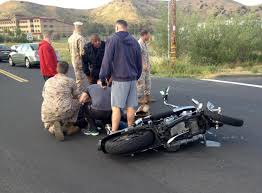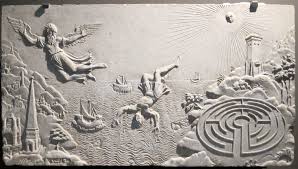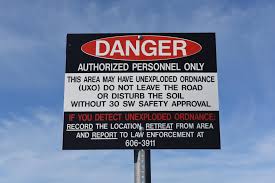
Riding safely means managing risk, but what is risk? Risk on a motorcycle is about getting hurt. It has two parts, the amount of damage and the probability it will occur. So driving a car is about 7,000 times riskier than flying in an airplane because plane crashes are rare not because they do less damage. Riding a bicycle is less risky than a car because while crashes are probable the damage amount is low. Risk involves both the amount of hurt and the probability of hurt. This web site advocates reducing both the:
- Amount of damage, by protective gear, etc.
- Probability of an accident, by safe riding skills.
Risk sense

Babies only see what is in front of their eyes, so if you cover something with a cloth, to them it just “disappears”. Soon they learn to “see” what is not directly visible, like an object hidden under a cover. Only when adult do they learn to see abstract “things” like risk, that are never directly seen. Your “risk sense” is the ability to “see” the probability of an accident. This sense is not like vision or hearing, as it comes from the mind, not your eyes and ears. A good risk sense is critical for riders. Experienced riders assess risk all around like a radar screen that “pings” every moment. Risk sense picks up danger like a Geiger counter clicks when radio-activity is near. Without it, you are a sheep among wolves. When you start riding, always listen to your risk sense. If you ride without a helmet, your risk sense tells you danger. If it starts raining, your risk sense tells you the accident chance is higher. What you do next is another thing and this site covers that, but to respond to risk you must first “sense” it. From moment to moment your risk sense tells you what is risky for you, if you listen to it.
Facing risk
People tend to flip-flop on risk. They either shut their eyes and charge blindly ahead like a bull, or open their eyes to see the danger and run away like a frightened rabbit. Both these approaches to danger, fight and flight, have their problems. The approach taken here is to first face the risk to see it clearly, and then take steps to reduce it. The balanced approach to risk is to neither fear it nor court it.
Don’t tempt fate!

The strong among us often deal with risk by confronting it. They do wheelies and other risky things to “prove” danger has no power over them. They are not scared. It is a macho thing to take risks to prove you are not afraid. It also tempts fate to pretend you are above life. The Greeks called this “hubris” (or pride), and said ‘Pride comes before a fall”. They argued that we are not Immortal Gods, so to act like we are is to invite their revenge. It is to “tempt fate”. It is a law of life that “things happen”, and this applies especially to motorcycle riders. To tempt fate is to arrogantly think one is above this law of unexpected events. There is enough risk in the world already without asking for more.
Don’t ignore risk!

The opposite of tempting fate is to ignore risk entirely. While some unwisely tempt fate, others deal with risk by trying to shut it out entirely. They feel that by riding slowly on sunny Sunday afternoons, the risk will disappear. Unfortunately, ignoring a risk might make you feel better but doesn’t alter the risk. In fact it increases it, as a danger ignored is harder to handle. The best way to deal with a danger is to know about it. Risk is like a dangerous dog – the more you try to run from it, the more it may chase you. Its better to face it bravely while backing away. This is the eyes wide open approach to risk.
What are you scared of?

Ask a young child what they fear most, and they might say tigers, sharks or fire. But these are not what actually kills most kids. The biggest killer of kids in most countries is cars driven by ordinary people. So tell your kids to fear cars, especially not to crawl under or hide around them. Another unrecognized killer of children is water. Swimming pools just sit there looking harmless, but if a kid slips in they drown in minutes. Tell your kids to fear water! Ask kids how they will defend against danger and they will likely say run away fast! Again they are wrong. They cant run from a speeding car or a pool drowning. The best defense against danger is to see it and avoid it. Tell your kids their best defense is their eyes not their legs. Likewise on a motorcycle, what you fear most is often not what is most dangerous. A big truck might look scary, but the bigger danger might be a lane that looks empty until you enter it. Just as society flags unseen dangers, flag in your mind known danger situations on the road, like intersections or lane changes. This is the eyes-wide-open approach to safe riding.
Eyes wide open

Ignorance is not bliss when it comes to riding a motorcycle. They say know your enemy, an on a motorcycle your enemy is risk. Deal with it not by seeking it or ignoring it, but by knowing it. If you know your enemy, forewarned is forearmed. Risk seekers are just as obsessed by risk as risk avoiders. The answer is to not to be hypnotized by risk. The eyes wide open approach to risk has three parts:
• Face the risk to understand how it arises.
• Reduce the risk by safe riding practices.
• Accept the risk whatever it is.

Facing risk means looking at it fearlessly. Reducing risk means changing the factors that affect it, as outlined in this site. Accepting risk means understanding that Life has no guarantees. This approach lets you think on the unthinkable. For example, who hasnt at some time thought “What if a car coming the other way suddenly swerves into my path?” The usual reaction is to just put it out of your mind. Indeed, in all my years riding I’ve never seen it. But the eyes wide open approach says – it could happen so what can you do? I decided it would be better to turn into the oncoming vehicle and fly over the top than turn away and be trampled! Finally the accept part lets you just pack it away in the part of your head that includes being hit by a meteorite.